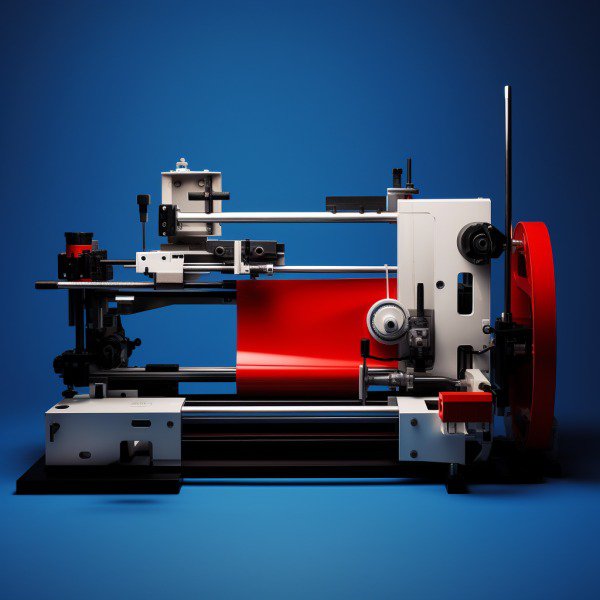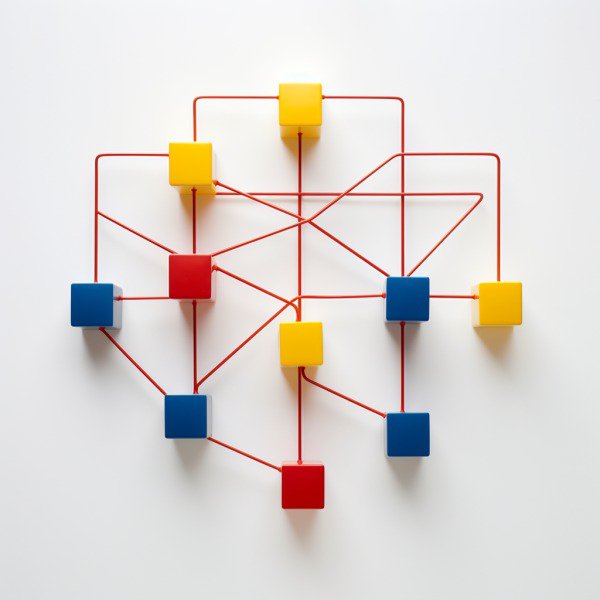Researching Manufacturers and Suppliers: The Ultimate Guide
Supplier success starts with effective manufacturer sourcing. Explore key tips to streamline your supply chain and establish lasting partnerships for business growth.
Alright, let’s dive in.
Finding a reliable manufacturer or supplier is crucial for the success of your startup. But where do you start?
No worries. We’ve got your back with this thorough guide to assist you in discovering quality suppliers and keeping your supply chain running without a hitch.
Using Alibaba for Initial Research
One popular platform to kick off your search is Alibaba.
To increase the likelihood of discovering reputable suppliers, seek out those with gold status, certification assessments and trade assurance – these signify that they adhere to stringent standards.
To increase your chances of finding quality suppliers, look for those with gold status, assessment certifications, and trade assurance – these are indicators that they adhere to high-quality standards.
Industry-Specific Directories as a Resource
Beyond Alibaba, numerous industry-specific directories available online can help narrow down potential manufacturers even further.
A quick Google search should lead you towards reputable options tailored to your niche market – don’t be afraid to dig deep.
Work with a Design who has connections.
Working with a designer who can help you through manufacturing is a great hack. You can leverage their connections in order to cut deals and de-risk the manufacturing process. To find your next product designer, get a free shortlist from Design Match.
Attending Conventions and Trade Shows
If face-to-face interactions are more up your alley, consider attending conventions or trade shows related to your industry.
This approach allows you to find suppliers and network with other professionals who may have valuable insights on which manufacturers offer top-notch products at competitive prices.
Now that you have a solid starting point for your search, it’s time to dive deeper and find the perfect match for your startup.
Remember, finding quality suppliers is essential in ensuring a smooth supply chain – so don’t cut corners when doing your research.
Happy hunting.
Evaluating Manufacturer Credentials: Finding Your Perfect Match
Alright, let’s dive in.
Once you’ve found potential manufacturers or suppliers, it’s time to play detective and evaluate their credentials. This will help ensure they meet your quality standards and can be a reliable partner for your startup.
Here are some key factors to consider:
Years of Experience: The More the Merrier.
A manufacturer with at least three years of experience is generally more trustworthy than a newbie on the block. An established track record indicates that they have survived the test of time and know how to navigate industry challenges.
Niche Specialization: Jack-of-All-Trades or Master of One?
Niche specialization within an industry can be advantageous as it demonstrates expertise in producing specific products. A specialized supplier may offer better quality control, efficiency, and innovation compared to one that caters to various industries.
Location Considerations: Proximity Matters
A manufacturer located in an industrial area often has access to better infrastructure, a skilled labor force, raw materials sourcing options, etc., which can translate into cost savings for you. Additionally, proximity plays a role when considering shipping costs and logistics management – something worth considering while evaluating candidates.
Beyond these primary considerations, honesty should also be factored into your evaluation process – look out for any red flags during communication or inconsistencies between what they claim and what you observe. Check if they have certifications that adhere to quality standards, such as ISO or other industry-specific credentials, which can indicate their commitment to excellence.
Once you’ve thoroughly evaluated potential manufacturers based on these factors, it’s time to shortlist the best candidates and move on to the next step: outreach and negotiation strategies. Happy hunting.
Outreach and Negotiation Strategies: Mastering the Art of Connecting with Manufacturers
Alright, let’s dive in.
Finding the perfect manufacturer is just half the battle; now it’s time to approach them like a pro. Having established the perfect manufacturer, we now provide advice on how to make an impactful introduction and secure a beneficial agreement.
Introducing Yourself Effectively
First impressions matter, so make yours count. When reaching out to potential manufacturers or suppliers, be clear about who you are and what your business represents. Highlight your company’s mission and goals while emphasizing any unique selling points that set you apart from competitors.
Asking Critical Questions During Negotiations
You know what they say – knowledge is power. Don’t be afraid to pose crucial queries during the bargaining process in order to guarantee both sides comprehend each other’s requirements. Some topics worth discussing include:
- Production timelines: How long will it take for products to be manufactured?
- Pricing structures: What costs should you expect throughout production?
- Samples & prototypes: Can they provide samples before committing to full-scale production?
- Maintenance & defect policies: What happens if there are issues with product quality?
- Environmental impact policies: Are they committed to sustainable practices?
Remember, asking these questions will help you make an informed decision and show the manufacturer that you’re serious about quality and success.
Balancing Honesty with Strategic Communication
Honesty is the best policy – most of the time. Honesty is key, yet it’s important to know when and how much information to share in order to foster trust while safeguarding your company’s interests. Focus on building trust while still protecting your company’s interests.
By following these tips, you’ll be well on your way to forging strong relationships with quality suppliers who can help take your startup to new heights.
Communicating Design Specifications: Get It Right the First Time
Alright, let’s dive in.
When it comes to working with manufacturers and suppliers, one of the most critical aspects is effectively communicating your design specifications. Ensuring both parties understand the design specifications is essential to avoid potential issues in the future.
In this section, we’ll explore some key strategies for ensuring your designs are crystal clear to your manufacturer. Let’s get started.
Sketches & Written Instructions: A Picture Is Worth a Thousand Words
The first step in communicating design specifications is providing detailed sketches or drawings of your product. These visual aids should be accompanied by written instructions explaining any specific details or requirements that may not be apparent from the sketch alone.
Creating effective design specs is crucial to finding quality suppliers and ensuring that your supply chain meets your quality standards.
Reference Photos: Show Them What You Mean
If you have existing products or prototypes similar to what you want to be manufactured, provide reference photos as well. Pictures of the existing products or prototypes can help to make sure that all parties have a clear comprehension of what needs to be manufactured, eliminating any potential confusion caused by sketches.
Tools like 3D Printers: Confirm Dimensions & Minimize Risks
To further minimize miscommunication risks during production, consider using tools like 3D printers to create physical prototypes of your product. This allows you and the manufacturer to confirm that dimensions are correct and provides a tangible reference for any discussions about design specifications.
Open Communication: Keep the Lines Clear
Throughout the entire process, maintain open communication with your manufacturer or supplier. Be prepared to answer questions they may have about your designs and be proactive in addressing any concerns that arise.
A great article from Forbes offers some additional tips on effective communication with manufacturers.
Final Thoughts: Trust but Verify
In conclusion, while trust is essential when working with manufacturers and suppliers, verifying that they understand your design specifications is crucial. By providing clear sketches, written instructions, reference photos, and utilizing tools like 3D printers for prototyping purposes – along with maintaining open lines of communication – you’ll set yourself up for success in bringing your product vision to life.
FAQs in Relation to Reliable Manufacturer Sourcing
What is manufacturer sourcing?
Manufacturer sourcing involves identifying and selecting reliable manufacturers or suppliers to produce goods for a business. This process typically includes researching potential partners, evaluating their credentials, negotiating contracts, and ensuring effective communication of design specifications.
How do you source reliable suppliers?
To source reliable suppliers, start by conducting research using platforms like Alibaba or industry-specific directories. Attend conventions and trade shows to network with potential partners. Evaluate the credentials of manufacturers based on experience, niche specialization, and location. Finally, engage in strategic outreach and negotiation while clearly communicating your design requirements.
Why do suppliers need to be reliable?
Reliable suppliers are crucial for maintaining product quality standards and timely delivery schedules. They help ensure consistent inventory levels that meet customer demands while minimizing risks associated with production delays or subpar products. A dependable supplier can also contribute positively to a company’s reputation through strong partnerships built on trust.
What are the 5 aspects of sourcing?
The five key aspects of sourcing include: 1) Researching potential manufacturers or suppliers; 2) Evaluating their credentials based on factors such as experience, specialization, and location; 3) Engaging in effective outreach strategies like attending trade shows; 4) Negotiating favorable terms during contract discussions; and 5) Clearly communicating design specifications throughout the partnership.




